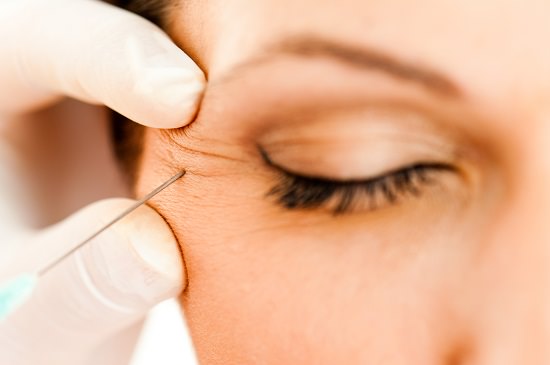Get to know the side effects of botox injections for hemifacial spasm and contact your doctor if you have any of the side effects.
What is Hemifacial Spasm?
Hemifacial spasm is a rare chronic nervous system condition where the muscles on one side of the face twitch involuntarily. A blood vessel compressing or pulsating against the facial nerve is usually the cause. It may also be due to facial nerve injury or a tumor.
This condition is similar to trigeminal neuralgia, where the fifth cranial nerve is affected, causing severe facial pain. Both hemifacial spasm and trigeminal neuralgia are a result of nerve compression from a blood vessel. Yet, the difference is whether the sensory nerve or motor nerve compresses or not. The signs of hemifacial spasm include twitching or contraction of facial muscles confined to one side of the face, which is uncontrollable and painless.
There’s no definitive cure for hemifacial spasms, but medications can suppress the symptoms in addition to injections or surgery at times. Medications like anticonvulsants and muscle relaxants may help treat mild cases but can cause side effects such as nausea, lethargy, and addiction; hence, it needs to be monitored regularly.
You can also opt for botox therapy, where Botulinum toxin, a protein produced by C.botulinum bacteria is injected into the affected region. Botox therapy causes muscle paralysis. If medications and injections fail to treat the muscle spasms, a microvascular decompression procedure can relieve the compression.
What is Botox?
It is minimally invasive and is a safe and effective treatment for fine lines and wrinkles. It has medical and cosmetic uses. Botox is a neurotoxin that targets the nervous system, preventing Acetylcholine from releasing and disrupting the nerve signals that contract muscle. It is ideal in treating wrinkles in the upper portion of the face mainly frown lines, horizontal forehead lines, and crow’s feet.
Botox starts working in three days and can last for about three months. When used properly, it is safe and has few side effects. Conditions that you can treat with Botox are Cervical dystonia, Lazy eye, Muscle contractures, Hyperhidrosis, Migraine, Bladder dysfunction, Eye twitching.
Side Effects of Botox Injections for Hemifacial Spasm
Botox injections are relatively safe when done by a certified expert medical professional. Probable side effects and complications include:
- Pain, swelling, or bruising at the treated area
- Headache
- Droopy eyelids
- Asymmetric smile
- Drooling and dry eyes, or excessive tearing.
Although very doubtful, Botox can spread in your whole body. See your doctor immediately if you notice any of these effects within hours to weeks after receiving treatment:
- Vision Problems
- Muscle weakness
- Speech problems
- Difficulty in swallowing
- Trouble Breathing
- Loss of bladder control
Who is Safe For Botox?
Patients with active wrinkles exhibit the most dramatic results from botox injection and are the ideal candidates for this treatment. Patients with inactive wrinkles visible at rest are also good candidates, but the results are relatively slower, and patients may require multiple appointments for significant improvements.
Contraindications
If you’re thinking of getting a botox treatment done, be mindful that you don’t fall in any of the below categories:
- People with Neuromuscular disorders like Myasthenia Gravis
- Professions reliant on facial expression (Actors and Singers)
- Immunocompromised patients
- Infection in the treatment region
- Keloidal Scarring
- Pregnancy or Lactating mothers
- Sensitivity or allergy to components of the botulinum toxin (e.g., cow’s milk protein allergy)
- Those with Unrealistic expectations.



